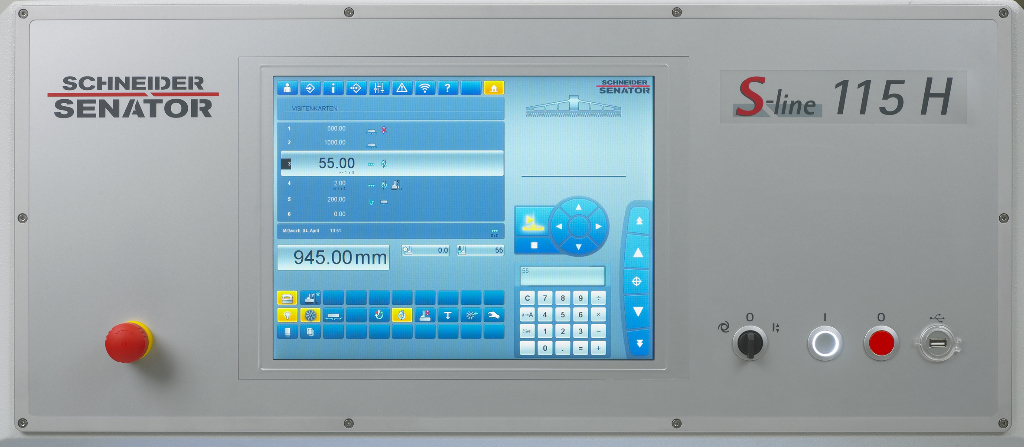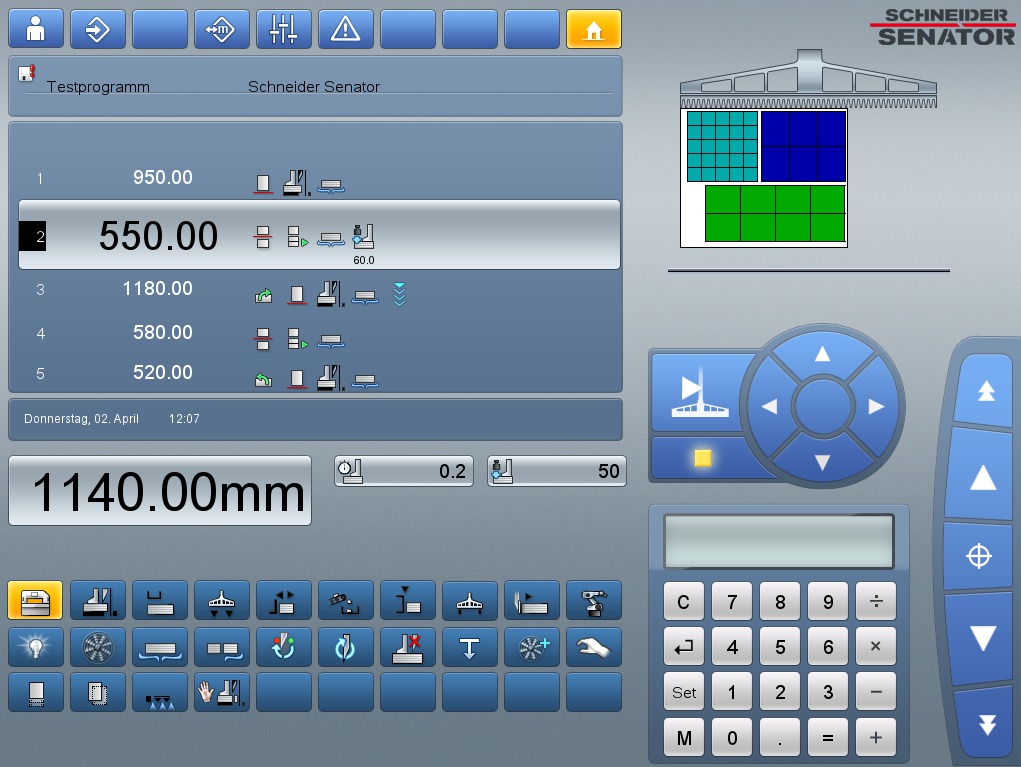Notepads, business cards, banknotes – if it's produced in stacked sheets, odds are it also needs to be cut to size with great precision. This is usually done manually on a paper cutting machine. With razor-sharp blades slicing thick stacks in rapid work cycles, these machines place serious demands on safety technology.
The cutter bar glides gracefully through a stack of paper centimeters thick, leaving behind a cleanly cut edge. Even before the blade completes the movement back to its original position, the operator has spun the stack into position for the next cut. In the meantime, the back gauge has automatically moved to the next position defined in the cut program.
This is the most hazardous step for operators because their hands are directly in the path of the cutter. If the blade were to come down at the wrong time, the resulting injuries would be severe. "For this process state, the cutting machine satisfies Category 4 requirements, the highest safety category. This was a decisive consideration when evaluating the automation technology," emphasizes Stefan Junker, electrical systems designer at Schneider Senator.
Quality is not a coincidence

In the northern German town of Buchholz, Schneider Senator has been building guillotine paper cutters of the highest quality for over 65 years. In 1948, they presented the world's first high-speed cutter with a hydraulic clamp and mechanical blade drive, and in 1977 they were the first to introduce a guillotine cutter equipped with a microprocessor. Since being acquired by Gerhard Busch GmbH in 2009, they are now able to supply complete single-source lines with integrated waste removal, loading and bundling technology. "Our machines are exceptionally durable. There's not a single machined part that we didn't produce ourselves. That's the only way we can deliver the quality our customers expect," reasons managing director Burkhardt Busch. Schneider Senator machines also stand out in areas such as energy efficiency and noise emissions.
The cutting process itself is no secret. A stack of paper is aligned on a vibrating table, or jogger, and then fed into the cutting area either automatically or manually. To ensure a uniform cut through the entire stack, a hydraulically driven clamp presses out any air trapped between the sheets. As the blade slices down through the material, the quality of the results depend on the machine's ability to maintain consistent speed and pressure. The trick to achieving this is one of Schneider Senator's most important trade secrets.

Changing markets demand new ideas
The general market trend toward increasingly individualized products has implications for paper cutting as well. Smaller print runs force manufacturers to design more flexibility into their machines and operator controls. "It used to be that a brewery would order a year's supply of labels in only a couple batches," recalls Busch. "But not anymore." How quickly you can change over between batches, how efficiently you can operate the machine and how easily it can be integrated into a the overall printing workflow all become critical factors. On top of that, in pursuit of fulfilling specific customer requirements, machines are growing closer and closer to being one-of-a-kind productions.
The previously used single-board controller was fundamentally unsuited for providing that kind of flexibility. Requirements for safety, modularity and reliability therefore came to feature prominently in the specifications for the new control system. Systems lacking integrated and scalable safety technology were not even considered. Long-term availability and backward compatibility also played a decisive role, as Schneider Senator intended to use the new control solution on all of its machine lines.
"Our new B&R control system gives us the opportunity to develop new functions and expand our core competencies." Burkhardt Busch, Managing Director, Schneider Senator
B&R offers a complete solution
At the end of the day, the design presented by B&R proved to be the best fit. The integrated Smart Safe Reaction functionality alone makes it possible to dynamically link safety functions to the machine's operating state. As the blade returns to its starting position after each cut, for example, the operator is able to reach into the workspace safely.
Intelligent safety technology has benefits in maintenance as well. In the event of an emergency stop, for instance, rather than halting mid-cut with its sharp edge exposed, the blade returns safely to its starting position. This allows the operator to rectify the error in the open workspace without risk of injury.
Being able to form mechatronic units for various electrical or hydraulic blade drives offers more than just added production efficiency. It also allows the operator to expand the solution later on without needing a new controller.

New software and HMI design
With the support of B&R's experts, the software was designed from the ground up to allow a single version of the program to run on all machines. "This enables employees to install the application program from a memory card during commissioning without assistance. The only thing left to do on the machine is configure any optional equipment," emphasizes Junker.
What users notice about the new PCC (Power Cutting Control) is the modern, intuitive user guidance. Cutting programs can be created on the machine or using an identical graphical interface on an office PC. The 15" operator panel provides a clear overview using simple graphical elements. The integrated documentation offers additional assistance right where it's needed.
"This control system gives us the freedom to focus on developing new functions," says Busch with confidence. At the top of the agenda are alternative drive concepts and integration into the overall flow of print shop data. These innovations will ensure that Schneider Senator's customers are well prepared for the onset of Industry 4.0.